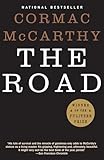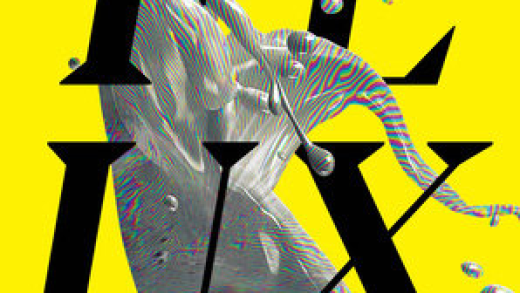 In his 2016 book The Great Derangement, Amitav Ghosh argues that we need a new literature to address and capture the realities of climate change. But the novel, to Gosh’s mind, is ill-equipped—or, rather, unwilling—to engage with the current crisis. As environmental disasters from global warming become more extreme and “improbable,” he writes, “to introduce such happenings into a novel is in fact to court eviction from the mansion in which serious fiction has long been in residence.” However, by narrowing his interest to literary fiction, Gosh ignores much of the canon of speculative fiction that has long incorporated climate-change narratives, from as early as JG Ballard’s 1962 novel The Drowned World.
In his 2016 book The Great Derangement, Amitav Ghosh argues that we need a new literature to address and capture the realities of climate change. But the novel, to Gosh’s mind, is ill-equipped—or, rather, unwilling—to engage with the current crisis. As environmental disasters from global warming become more extreme and “improbable,” he writes, “to introduce such happenings into a novel is in fact to court eviction from the mansion in which serious fiction has long been in residence.” However, by narrowing his interest to literary fiction, Gosh ignores much of the canon of speculative fiction that has long incorporated climate-change narratives, from as early as JG Ballard’s 1962 novel The Drowned World.
 Alissa Hattman’s Sift is one such speculative work, a post-apocalyptic novel set in a world of social collapse and environmental ruin, a scorched landscape that can no longer support life. Like Octavia Butler’s Parable of the Sower, Sift tells the story of travelers searching for fertile soil and somewhere safe to live. The novel’s narrator is also similar to the main character of The Parable of the Sower in that she inserts small vignettes describing the natural world, from the air to water to stones. She uses these observations of the natural world to ground her in a time of disruption and dislocation.
Alissa Hattman’s Sift is one such speculative work, a post-apocalyptic novel set in a world of social collapse and environmental ruin, a scorched landscape that can no longer support life. Like Octavia Butler’s Parable of the Sower, Sift tells the story of travelers searching for fertile soil and somewhere safe to live. The novel’s narrator is also similar to the main character of The Parable of the Sower in that she inserts small vignettes describing the natural world, from the air to water to stones. She uses these observations of the natural world to ground her in a time of disruption and dislocation.
Sift centers on two women, The Driver and Tortula, who travel across barren lands filled with “charred buildings, burnt-out vehicles, piles and piles of sheet metal and broken brick,” hoping to find somewhere to plant food. There is no sign of other people—it’s just the two of them driving through dust and ash. Through Tortula’s memories, we get flashes of how this world came to be: authoritarian governments recruiting civilians to fight resource wars, putting cities under lockdown and instituting curfews due to invasions, fire storms, and uprisings.




 Sift’s focus on women is unusual in the post-apocalyptic genre, which has historically tended toward male protagonists, as in Richard Matheson’s I Am Legend, Cormac McCarthy’s The Road, and Samuel R. Delany’s Dhalgren. Even in women-led narratives like The Parable of the Sower and Emily St. John Mandel’s Station Eleven, women are often part of a larger group and are at constant risk of sexual assault and rape. Clare Vaye Watkins’s 2015 novel Gold, Fame, Citrus ratchets this concept up several notches with the main character in a climate-changed world who has a harem of sorts—women who have nothing but him and his drugs in the post-apocalyptic world. This danger isn’t completely ignored in Hattman’s book, however, as Tortula remembers men in her house molesting her and her mother, men taking her mother away. “Two years later they returned you to your bed,” she remembers, “when you were too weak and damaged to be any use to them.”
Sift’s focus on women is unusual in the post-apocalyptic genre, which has historically tended toward male protagonists, as in Richard Matheson’s I Am Legend, Cormac McCarthy’s The Road, and Samuel R. Delany’s Dhalgren. Even in women-led narratives like The Parable of the Sower and Emily St. John Mandel’s Station Eleven, women are often part of a larger group and are at constant risk of sexual assault and rape. Clare Vaye Watkins’s 2015 novel Gold, Fame, Citrus ratchets this concept up several notches with the main character in a climate-changed world who has a harem of sorts—women who have nothing but him and his drugs in the post-apocalyptic world. This danger isn’t completely ignored in Hattman’s book, however, as Tortula remembers men in her house molesting her and her mother, men taking her mother away. “Two years later they returned you to your bed,” she remembers, “when you were too weak and damaged to be any use to them.”
The circumstances that brought these two women together are purposefully vague and unexplained. The Driver suddenly appears at Tortula’s door on a day like any other, saving Tortula from her empty home and life. “I thought that being inside would protect me,” says Tortula of her home, “with its corners and its curtains.” Why The Driver chose to rescue her is not clear, no matter how many times Tortula asks.
Their destination is a place called Mountain. The Driver believes that, beyond Mountain, lies a living landscape where they can grow crops and survive off the land. They carry basic survival supplies with them, plus crates of fresh vegetables, and seeds to plant once they reach their destination. In their travels, they meet no one. At one point, they encounter a garbage bag filled with the detritus of what was once ordinary life: a Pepto Bismol bottle, toenail clippers, ear plugs, pill bottles. While they put most of the things back in the bag and leave it where they found it, Tortula keeps the Pepto bottle. As she says, “Sometimes people need to imagine life even when life is not there.”
Interestingly, Sift incorporates elements of magical realism: As they travel, their transportation transforms into exactly what they need for that leg of the journey, like Cinderella’s pumpkin turning into a coach. Their vehicle starts as a car, becomes part balloon-part buggy, and then shifts to a helicopter. Once they crash into Mountain, the helicopter changes into a lantern, and after some time traveling through Mountain, the lantern becomes a pickaxe.
 This magical realism is also evident when they drink from a polluted river. After drinking, The Driver begins to retch, bringing up “a small pond and in the pond are tadpoles and snails and black algae bottle caps slicked with half-memories and pain.” These scenes add a sense of the unreal to the book, and suggests that the world Tortula and The Driver are now living in has been transformed by more than just wildfire. Such moments are reminiscent of Jeff VanderMeer’s Area X trilogy, where the natural world is tinged with the uncanny.
This magical realism is also evident when they drink from a polluted river. After drinking, The Driver begins to retch, bringing up “a small pond and in the pond are tadpoles and snails and black algae bottle caps slicked with half-memories and pain.” These scenes add a sense of the unreal to the book, and suggests that the world Tortula and The Driver are now living in has been transformed by more than just wildfire. Such moments are reminiscent of Jeff VanderMeer’s Area X trilogy, where the natural world is tinged with the uncanny.
 By the middle of the book, Tortula has fused with an outgrowth of moss which sprouts from a wound on her forehead—a fitting occurrence, seeing as “tortula” is a species of moss. It is also reminiscent of both the Area X trilogy and Matt Bell’s Appleseed, in which a character is colonized by an apple tree and its ecosystem. “I feel the moss stitching the skin of my forehead together,” Tortula says. “The scratchy shifting in the center of my head is me, but not me. It is the mosses, alive, drinking.”
By the middle of the book, Tortula has fused with an outgrowth of moss which sprouts from a wound on her forehead—a fitting occurrence, seeing as “tortula” is a species of moss. It is also reminiscent of both the Area X trilogy and Matt Bell’s Appleseed, in which a character is colonized by an apple tree and its ecosystem. “I feel the moss stitching the skin of my forehead together,” Tortula says. “The scratchy shifting in the center of my head is me, but not me. It is the mosses, alive, drinking.”
 The book’s epigraph, naturally, is an excerpt from Robin Wall Kimmerer’s Gathering Moss, which contains an apt metaphor for Tortula coming into her own sense of narrative agency:
The book’s epigraph, naturally, is an excerpt from Robin Wall Kimmerer’s Gathering Moss, which contains an apt metaphor for Tortula coming into her own sense of narrative agency:
Much learning takes place by patient observation, discerning pattern and its meaning by experience. It is understood that there are many versions of truth, and that each reality may be true for each teller. It’s important to understand the perspective of each source of knowledge. The scientific method I was taught in school is like asking a direct question, disrespectfully demanding knowledge rather than waiting for it to be revealed. From [the moss] Tetraphis, I began to understand how to learn differently, to let the mosses tell their story, rather than wring it from them.
Sift is a remarkable entry in the rich climate-change canon that already exists within the genre of speculative fiction. But it is also an allegorical novel about love, grief, memory, and community, grounded in natural observations and populated by people known only by their function: The Driver, The Artist, The Activist, The Labor Leader, Mother. It is a pared down cast in a pared down landscape with only Tortula’s memories of these characters to inhabit it. At one point, a character called The Writer issues a declaration that could be read as a mandate for—and from—Hattman herself: “In times of dread, artists must never choose to remain silent.”
The post Alissa Hattman’s ‘Sift’ Is a Post-Apocalyptic Prophecy appeared first on The Millions.
Source : Alissa Hattman’s ‘Sift’ Is a Post-Apocalyptic Prophecy












